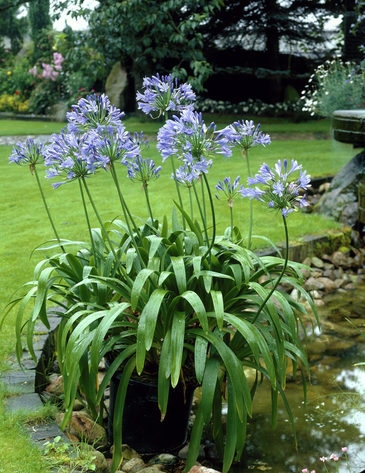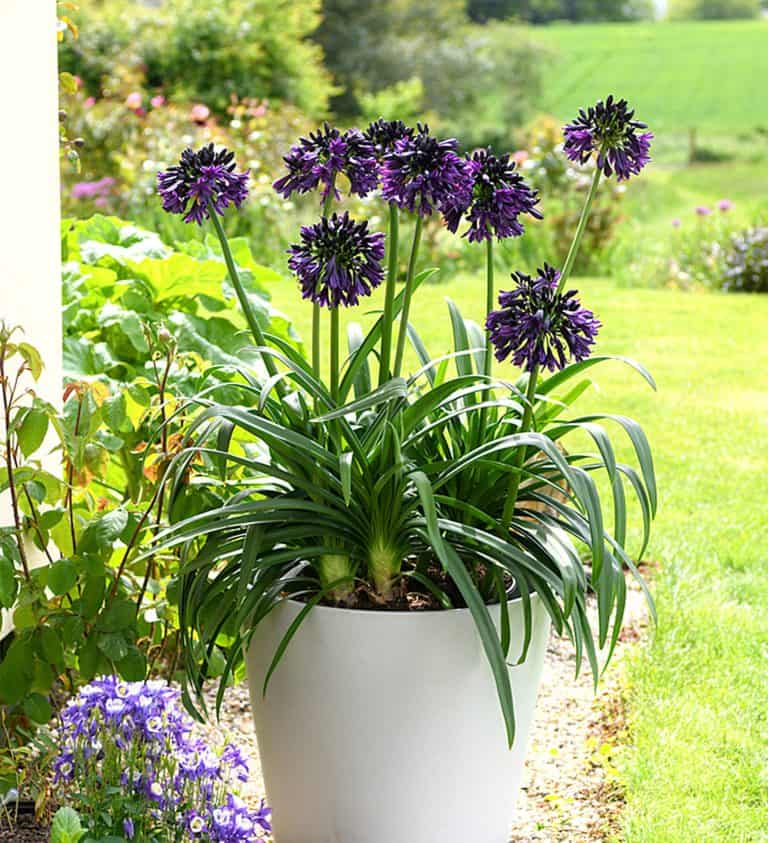Unleashing the Secret to Effective Agapanthus Farming: Advice for a Flourishing Yard
In the realm of gardening, cultivating agapanthus successfully needs a strategic method that includes various elements of plant care. By comprehending the subtleties of agapanthus farming, one can produce an environment where these plants grow and bloom generously.
Growing Agapanthus: Best Practices
When growing Agapanthus, appropriate soil preparation is essential for making certain effective growth and growth of these attractive blossoms. Agapanthus, frequently referred to as Lily of the Nile or African lily, flourishes in well-draining soil with a slightly acidic to neutral pH level - Agapanthus. Prior to planting, it is vital to amend heavy clay soils with natural matter such as garden compost or peat moss to boost drain and provide crucial nutrients for the plants
To grow Agapanthus, select an area that obtains complete sunshine to partial shade, as this will promote healthy and balanced growth and bountiful flowering. Dig an opening twice the diameter of the plant's root sphere and place the Agapanthus at the very same depth it was formerly growing. Delicately backfill the hole with soil, weighing down firmly to remove any kind of air pockets around the roots.
Water the newly grown Agapanthus completely and continue to maintain the dirt equally damp, particularly during the plant's energetic growing period. Agapanthus. Using a balanced plant food once a month can even more sustain the plant's growth and flowering. By adhering to these finest methods for planting Agapanthus, you can produce a spectacular screen of these exciting flowers in your garden
Suitable Dirt Conditions for Agapanthus
For optimum growth and flowering success of Agapanthus plants, ensuring the dirt conditions are optimal is vital. Agapanthus thrives in well-draining dirt with a slightly acidic to neutral pH degree ranging from 6.0 to 7.0. This type of dirt enables appropriate water drainage, protecting against waterlogging which can cause root rot. To improve soil drain, think about adding raw material such as garden compost or peat moss when preparing the growing website. Furthermore, Agapanthus prefers soil that is abundant in nutrients, so including a balanced fertilizer during the expanding period can promote healthy development and lively flowers.

Watering and Feeding Tips
To make sure healthy growth and lively flowers, proper watering and fertilizing techniques are crucial for successful Agapanthus cultivation. Agapanthus plants profit from normal watering, especially throughout the expanding season. It is recommended to water deeply as soon as a week, making sure the soil is wet however not soaked. During hot weather condition or in pots, more constant watering might be essential to stop the soil from drying totally. Visit Your URL
When it involves feeding Agapanthus, a balanced plant food with equivalent parts nitrogen, phosphorus, and potassium can be applied in the spring to promote healthy growth and flowering. Slow-release fertilizers are ideal for supplying nutrients progressively over a prolonged period. Avoid over-fertilizing, as this can result in excessive vegetation development at the expense of blossoms.
In addition, including raw material like garden compost into the soil can boost nutrient degrees and enhance dirt structure, helping in the general wellness of the Agapanthus plants. By following these watering and fertilizing pointers, gardeners can guarantee their Agapanthus plants flourish and generate spectacular displays of flowers.
Trimming and Deadheading Methods
Correct pruning and deadheading techniques play an important duty in keeping the wellness and visual appeals of you could check here Agapanthus plants, complementing the necessary methods of watering and fertilizing for successful cultivation. Pruning Agapanthus involves removing invested blossom heads, dead or yellowing fallen leaves, and overall shaping of the plant to advertise better development. Deadheading, the procedure of getting rid of faded flowers, not just improves the plant's appearance yet likewise motivates further blooming.
When deadheading Agapanthus, it is recommended to snip off the flower stem at the base using sharp, tidy shears. This process reroutes the plant's energy from seed manufacturing back right into origin and vegetation growth, promoting a much healthier and extra durable plant. Routine deadheading can extend the flowering period of Agapanthus and prevent self-seeding, which can bring about congestion.
In regards to pruning, Agapanthus usually advantages from a light trim after blossoming to clean the plant and motivate fresh development. Cutting down the invested blossom stems and removing any type of dead or broken vegetation assists keep the plant's vitality and total look. Nevertheless, it is important to prevent cutting right into the crown of the plant, as this can weaken its health.

Protecting Agapanthus From Pests and Diseases
Executing reliable bug and disease monitoring techniques is vital to safeguarding the health and vigor of Agapanthus plants in cultivation. One common bug that influences Agapanthus is the Agapanthus borer, a caterpillar that passages into the plant, creating damage to the leaves and blossoms.
Along with parasites, Agapanthus are at risk to illness such as root rot and fungal fallen leave areas. These concerns can commonly be stopped by ensuring correct water drainage and staying clear of overwatering. If signs of disease appear, affected parts of the plant must be quickly removed to avoid additional spread. Fungicides might likewise be utilized as a therapy action, adhering to the supplier's guidelines thoroughly. By remaining cautious and attending to pest and illness concerns immediately, garden enthusiasts can aid their Agapanthus prosper and flourish.

Conclusion
In final thought, effective farming of agapanthus needs appropriate planting methods, suitable dirt conditions, sufficient watering and fertilizing, regular trimming and deadheading, and protection from pests and diseases. By following these suggestions and techniques, garden enthusiasts can make sure a flourishing yard full of gorgeous agapanthus flowers. Agapanthus. Bear in mind to maintain regular treatment and interest to information to promote the wellness and durability of these stunning plants
When planting Agapanthus, appropriate dirt preparation is necessary my sources for ensuring effective development and development of these gorgeous blossoms.Water the freshly grown Agapanthus thoroughly and continue to keep the dirt equally moist, particularly during the plant's energetic growing period.For optimal development and growing success of Agapanthus plants, making sure the dirt problems are suitable is important. When transplanting or planting Agapanthus, ensure the dirt is well-prepared to give the needed structure for the plants to establish themselves effectively. One usual pest that impacts Agapanthus is the Agapanthus borer, a caterpillar that tunnels into the plant, creating damage to the fallen leaves and flowers.